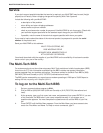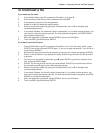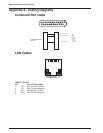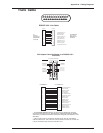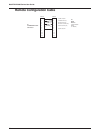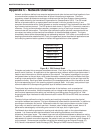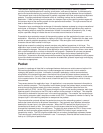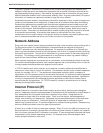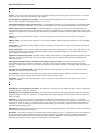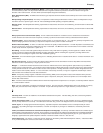
76
MultiFRAD 3000-Series User Guide
Appendix C - Network Overview
Network architecture defines how computer equipment and other devices are linked together to form
a communications system that allows users to share information and resources. There are
proprietary network architectures and open architectures like the Open Systems Interconnection
(OSI) model defined by the International Organization for Standardization (ISO). The OSI model
defines a layered model for an open systems environment in which a process running in one
computer communicates with a similar process on another computer if they implement the same OSI
layer communications protocol. The OSI protocol stack shown in Figure B-1 is commonly used as a
reference. During a communications session, processes running in each layer on each computer
communicate with one another. The bottom layer defines the actual physical components such as
connectors and cable and the electrical transmission of data bits between systems. The layers
immediately above define data packaging and addressing methods. Still further up are methods for
keeping communication sessions alive. Finally, the uppermost layers describe how applications use
the underlying communication systems to interact with applications on other systems.
Application Layer 7
Presentation Layer 6
Session Layer 5
Transport Layer 4
Network Layer 3
Data-Link Layer 2
Physical Layer 1
Figure B-1. OSI Protocol Stack
Protocols are loaded into a computer as software drivers. Each layer of the protocol stack defines a
specific set of functions. An application at the uppermost layer interacts with the layer below when it
needs to send information to another system on the network. The request is packaged in one layer
and passed down to the next layer, which adds information related to functions handled at that layer,
creating a new packet within a packet. This package is then passed down to the next layer and the
process continues. Each layer adds information to the message packet and this information is read
by the corresponding layer in the receiving system's protocol stack. In this way, each protocol layer
communicates with its corresponding protocol layer to facilitate communication.
The physical layer defines the physical characteristics of the interface, such as mechanical
components and connectors, electrical aspects such as voltage levels representing binary values,
and functional aspects such as setting up, maintaining, and taking down the physical link. Well
known physical layer interfaces for data communication include RS-232 and RS-449, the successor
to RS-232.
The data-link layer defines the rules for sending and receiving information across the physical
connection between two systems. This layer encodes and frames data for transmission, in addition to
providing error detection and control. Because the data-link layer can provide error control, higher
layers may not need to handle such services. However, when reliable media is used, there is a
performance advantage by not handling error control in this layer, but in higher layers.
The Network layer defines protocols for opening and maintaining a path on the network between
systems. It is concerned with data transmission and switching procedures, and hides such
procedures from upper layers. The network layer can look at packet addresses to determine routing
methods. If a packet is addressed to a workstation on the local network, it is sent directly there. If it's
addressed to a network on another segment, the packet is sent to a routing device, which forwards it
on the network. Some common protocols occupying the network layer are Internet Protocol (IP),
X.25, Novell's Internetwork Packet Exchange (IPX), Banyan's VINES Internet Protocol (VIP).



